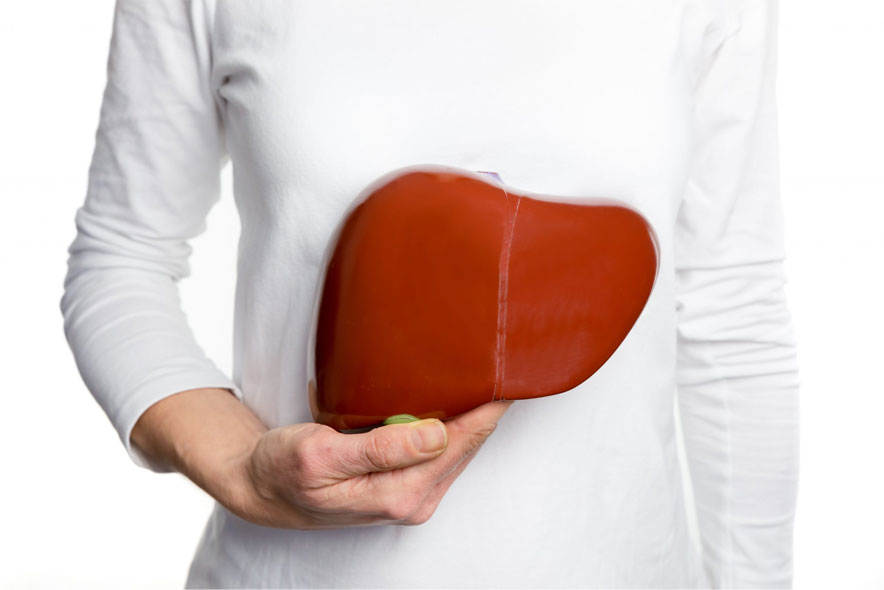Liver Fibroscan
Liver Shearwave Elastography (Liver Fibroscan)
Liver Shearwave Elastography, commonly known as FibroScan, is a non-invasive diagnostic procedure used to assess the stiffness of the liver. This technique is particularly useful in evaluating liver fibrosis (scarring) and steatosis (accumulation of fat in liver cells), conditions often associated with chronic liver diseases such as hepatitis B, hepatitis C, and non-alcoholic fatty liver disease (NAFLD).
Here’s an overview of how Liver Sheawave Elastography (Fibroscan)works and its clinical significance:

How Liver Shearwave Elastography (Fibroscan) Works
Principle : Liver Shear wave Elastography (Fibroscan) measures the velocity of a shear wave that is mechanically induced in the liver tissue. The speed of this wave correlates with tissue stiffness: the faster the wave, the stiffer the tissue.
Procedure : The patient lies on their back, with their right arm raised behind their head to expose the right side of the rib cage. A probe, applied to the skin, emits a pulse of energy, creating shear waves that penetrate the liver. The device then measures the speed of these waves.
Scoring : The results are expressed in kilopascals (kPa), with higher values indicating greater liver stiffness. The degree of fibrosis is classified based on these measurements, ranging from no fibrosis to cirrhosis.
Clinical Significance
Early Detection : Shear wave Elastography (Fibroscan) allows for the early detection of liver fibrosis, enabling timely intervention to prevent progression to cirrhosis or liver failure.
Monitoring : Hepatic ultrasound is used to monitor disease progression in patients with known liver conditions and to assess the efficacy of treatment regimens.
Non-Invasive : As a non-invasive alternative to liver biopsy, liver shearwave elastography london reduces the risk of complications and discomfort associated with invasive procedures.
Efficiency : The procedure is quick, typically taking only 15-20 minutes, and provides immediate results, facilitating clinical decision-making.
Limitations
Influence of Acute Inflammation : Acute liver inflammation can temporarily increase liver stiffness, potentially leading to an overestimation of fibrosis.
Obesity : In patients with high body mass index (BMI) or substantial abdominal fat, the accuracy of FibroScan measurements may be reduced, necessitating alternative methods or adjustments in technique.
Fibro scanning of liver represents a significant advancement in the management of liver diseases, offering a safe, efficient, and non-invasive method for assessing liver stiffness and fat content. Its role in the early detection and monitoring of liver fibrosis makes it a valuable tool in guiding treatment decisions and improving patient outcomes. However, awareness of its limitations is crucial for accurate interpretation of results.
What is Liver ShearWave Elastography (FibroScan)?
Liver ShearWave Elastography, often referred to as FibroScan, is a non-invasive test that measures the stiffness of your liver. It uses sound waves to create a shear wave, the speed of which can indicate the presence of fibrosis (scarring) or cirrhosis (advanced scarring) in the liver.
Why might I need a Liver ShearWave Elastography (FibroScan)?
Your doctor may recommend a Liver ShearWave Elastography (FibroScan)test if you're at risk for liver diseases such as hepatitis B, hepatitis C, fatty liver disease, alcoholic liver or if you have symptoms suggesting liver problems. It's also used to monitor known liver conditions.
How should I prepare for a Liver ShearWave Elastography (FibroScan)?
Typically, you should fast (not eat or drink) for 6 hours before the test to ensure more accurate results.
How are FibroScan results interpreted?
Liver ShearWave Elastography (FibroScan) results are given in kilopascals (kPa), with higher values indicating greater liver stiffness. The specific range for normal and abnormal stiffness will depend on the underlying liver condition being assessed. Your doctor will interpret these results in the context of your overall health and other diagnostic tests.
Can Liver ShearWave Elastography (FibroScan) detect liver cancer?
ShearWave Elastography (FibroScan) is primarily used to assess liver stiffness and cannot directly detect liver cancer. However, it can identify cirrhosis, a risk factor for developing liver cancer.
Is Liver ShearWave Elastography (FibroScan) suitable for everyone?
Liver ShearWave Elastography (FibroScan) is suitable for most people, but its accuracy can be affected by factors like obesity or the presence of ascites (fluid in the abdomen).
How does Liver ShearWave Elastography (FibroScan) differ from a traditional liver biopsy?
Unlike a liver biopsy, which involves inserting a needle into the liver to remove a small tissue sample for examination, Liver ShearWave Elastography (FibroScan) is non-invasive and painless. There's no need for needles, and the procedure carries no risk of bleeding or infection.
